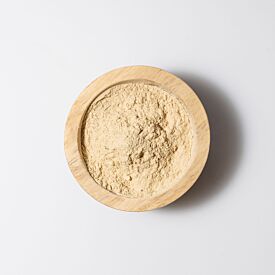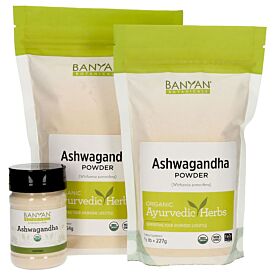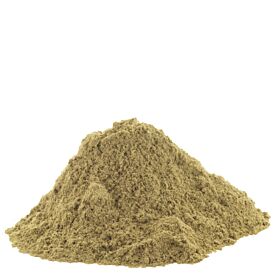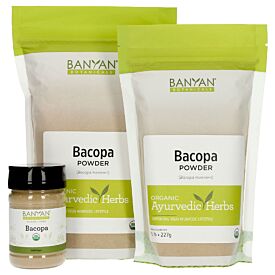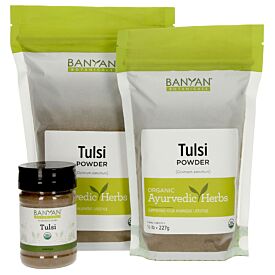Growing Roots at Banyan Farm
There is nothing quite like farming. The metamorphoses of the earth permeates a magic that settles onto the fields as night turns to day. Each morning, the plants awaken, and the air is filled with prana. Each morning, the farmer is filled with patience, observance, gratitude, strength, and resilience. The farmer seizes the opportunity to love the earth and in that knowing, the day begins.
2020 has been quite a metamorphosis for Banyan Farm. As our second year on the farm, we were in a place to begin implementing a long-term vision for the land while we accomplished exciting milestones, including the start of our CSA (community supported agriculture) program, selling at local farmer's markets, and completing our first Living Ayurveda Internship sessions.
Sowing Seeds
We sowed our first veggie seeds (lettuce and spinach) in the greenhouse beginning in late January, with our first herb seeds (ashwagandha) sown around the Spring Equinox. From these beginnings, the greenhouses have been full ever since!
Our farm team deeply appreciates having the opportunity to grow both veggies and medicinal herbs: this diversity naturally creates a dynamic farm with a wide range of new skills to learn and refine.
This year, we cultivated 1.5 acres of veggies and four acres of medicinal herbs. For our veggies, we are growing lettuce, kale, spinach, bok choi, green garlic, broccoli, cauliflower, cabbage, onions, potatoes, green beans, carrots, cucumbers, tomatoes, winter squash, and much more! On the field margins, we grow plums, apples, pears, peaches, and blackberries, which all show up at grower’s markets and in our CSA.
Beginning in April, we were able to begin offering produce at our local grower’s markets in Grants Pass and Ashland. By mid-May, our CSA program was in full swing, serving 30 people around the Rogue Valley with veggies, fruit, and herbs—all grown on the Banyan Farm.
From our four acres of medicinal herbs, we grow tulsi, skullcap, bhringraj, bhumyamalaki, hemp, and ashwagandha, yielding large amounts from a small space of land, including:
- 1000 lbs. dried tulsi
- 1400 lbs. dried bhringaraj
- 2000 lbs. dried hemp
- 600 lbs. dried skullcap
- 600 lbs. dried ashwagandha
- 50 lbs. dried bhumyamalaki
All of these herbs are being integrated directly into Banyan products.
Other herbs we are growing for the farmer’s market and classroom use include bacopa, chamomile, echinacea, nettle, lemon balm, motherwort, lemon verbena, gotu kola, and marshmallow.
The farm team offers much thanks and prayer to the plant elders on the land, who have been growing on the farm for a long time—some long before Euro-American colonization of these areas in the 1800s. These include the Mother Oaks, Doug Firs, Madrones, Ceanothus, Incense Cedar, Ponderosa Pine, and Manzanita. They offer guidance and wisdom throughout the process.
Welcoming Interns
2020 also marked the beginning of the Living Ayurveda Internship (LAI). This year, the farm was able to support both spring and summer sessions, where interns were able to learn about the practices of bioregional Ayurveda through farming, communal living, and classroom education.
Our first interns arrived on the farm early June and instantly brought positive energy and steadfast curiosity to the farm and the plants. Throughout the summer, I greatly enjoyed stepping onto the farm for a late evening stroll to hear interns singing in the field to the tulsi plants, or an Agnihotra ceremony being practiced, or (most often) the billowing laughter from lively conversations.
Growing and Learning through Challenges
2020 has come with its share of challenges as well, ranging from the global pandemic, a national reckoning with race, equality, and justice, and devastating local wildfires that have come within miles of our Banyan Farm and have deeply impacted much of our surrounding community.
Through it all, I have observed the perseverance and dedication of our Farm team and our interns. In the spring, when we seriously considered postponing the internship in light of COVID-19, it was because of the interns’ drive and commitment that convinced us to continue with safely planning for their arrival. In the fall, when faced with possible evacuation in the face of wildfires, we offered to end the program early so they could return home. They chose to stay.
I want to share my gratitude to our Farm team: because of their hard work, we were able to actualize our dreams for the Farm and grow such beautiful, bountiful crops. They are truly essential workers, helping to feed and nourish our communities!
The Banyan Farm has also become the space for deep conversations about changing the landscape of farming, our relationship with the land, and reflecting on true equality for all. This requires a reckoning with the history of appropriation and colonization of the land, plants, and people, and an honest and humble reflection on how we can learn how to be a part of the solution.

Looking Ahead
Looking forward, we have our ashwagandha and hemp harvests upon us. Veggie starts are being put into the ground for winter and new infrastructure projects are in motion for next year.
For me, this is all magic in motion—personal transformation mixed with a collective metamorphosis. Banyan Farm is truly in the process of blossoming, learning how to tend, and stepping into relationships founded on reciprocity with all of the farm’s inhabitants.






